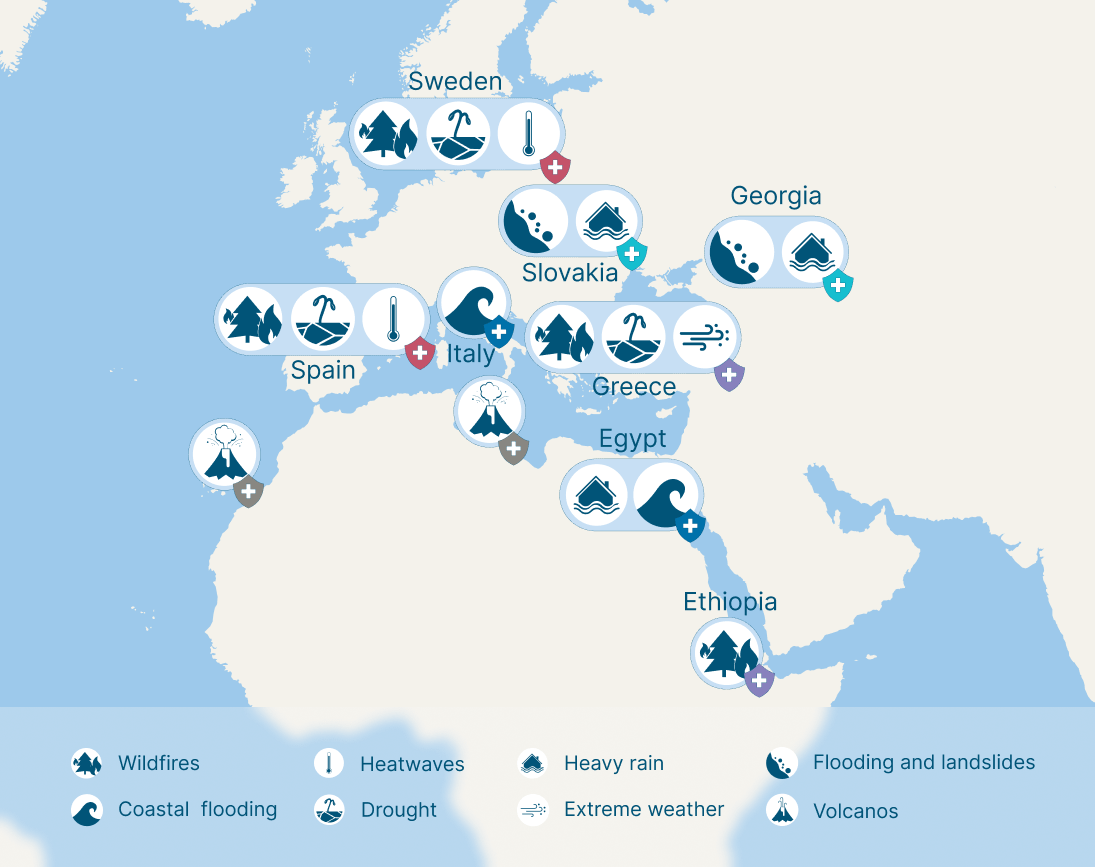Introduce a standardised Decision Support Dissemination System (DSDS) for risk and vulnerability assessment that leverages and enhances existing capabilities, leading to a fully integrated multi-hazard platform.
Create a suite of comprehensive AI-based products, building on operational EWS and insights from MedEWSa’s four paired twin pilot sites, that bridge areas with different climatic and geographic conditions but similar hazardous events, to deliver innovative forecasting and impact assessment services.
Build on existing, patchy, and fragmented technologies to deliver a service covering vulnerable areas in Europe, the Mediterranean, and Africa allied continuous monitoring of multiple hazards. The service will be validated and operational at a TRL6-8 by the end of the project based on tools developed from the project’s four twin pilot sites.
Use technological breakthroughs in Big Data including extreme values and model assimilation, combining advanced artificial intelligence (AI) and explainable artificial intelligence (XAI) with local and regional expertise, complemented by mapping methods and risk transfer solutions.
Deliver critical and targeted information on climate-related hazards and risks to a wider audience, leveraging innovative societal support and outreach, enabling effective early warning and deployment of validated interventions and risk reduction strategies at regional, national and international levels, and at local levels in partnership with Red Cross and Red Crescent national teams.
WP1 will
WP2 aims to
WP3 aims to
WP4 aims to link the innovative forecasts and impact assessment services developed in WP3 with innovative forms of financing for emergency preparedness. It deals with the implementation of science-driven Alternative Risk Transfer solutions for extreme weather and/or geological events, such as insurance parametric products, helping fill funding gaps by leveraging resources from insurance and/or capital markets.
WP5 aims to
WP6 aims to
WP7 aims to develop and execute a dissemination and communication strategy to make all stakeholders, and service recipients fully aware of the four pillars of research and technology that form MedEWSa’s core activities.
WP7 oversees and guides four core tasks
